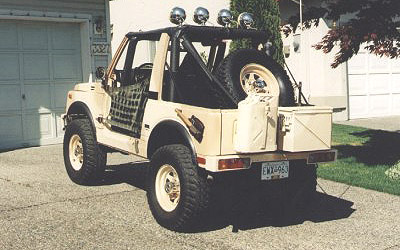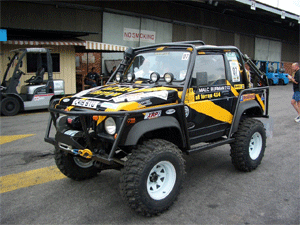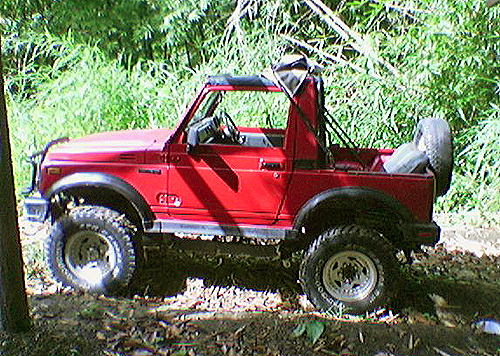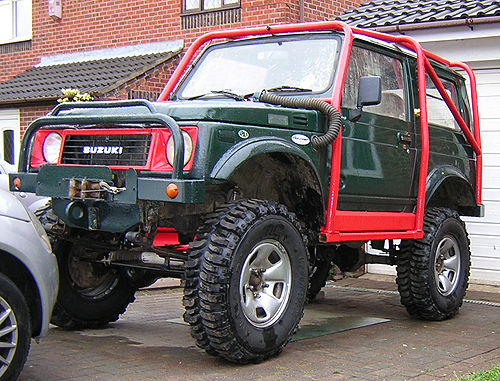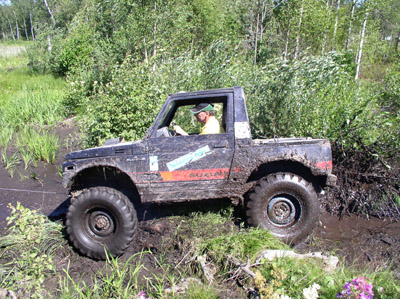The battery in your vehicle is one of the items that is often overlooked when regular maintenance checks are carried out. If the vehicle is not used on a regular basis, the battery can run down. We might think that if the Suzuki SJ is not being used, the battery should be fine. This is not always the case. Sometimes there are alarms, clocks, radios, and even relays that are constantly drawing power from the battrey.
A flat battery need not cause panic. Assuming that the battery has enough power left to be able to fire the engine but not turn the starter motor, and you are unable to push start the vehicle, you could either use jumper cables, or spin the rear wheels to start the engine.
Using a booster battery ...
Occaisionally your battery may not have sufficient current to turn the starter motor. In this instance, another battery can be connected to 'boost' the power of the dead battery. In this instance 'jump cables' or 'booster cables' are used.
When jump starting a vehicle, always inspect both batteries before connecting booster cables. Do not jump start a damaged battery. Make certain that the vehicles are not touching and both ignition switches are turned to the OFF position. The jumper cables should not reach across either engine, where they might drop accidentally into the fans.
CAUTION: In extremely cold weather, look into the cells to be sure the battery fluid is not frozen. If this is the case, thaw out the battery before using the jumper.
Connect one end of the red cable to the "positive" terminal of the "dead" battery. Then connect the other end of the red booster cable to the "good" battery. One end of the black booster cable is now attached to the terminal of the "good" battery before the other end of the black cable is attached to the lifting bracket on the motor (or any other good solid earth point) of the vehicle with the "dead" battery.
Now insert the key in the ignition, and start the vehicle. As soon as the engine is running, disconnect the 'booster' battery by removing first the black cable, and then the red cable.
ALWAYS KEEP THE ENDS OF THE CABLES APART TO AVOID ANY UNPLEASANT SPARKS.
No jumper cables ...
By jacking up the rear wheels and rotating one of them with a length of rope the engine can be restarted.
· Switch off all electrical equipment to conserve any remaining battery power.
· As the vehicle cannot be held by the handbrake the vehicle must be chocked. In sandy conditions one way to do this is to dig shallow holes ahead of the front wheels and push the vehicle into them. On hard ground, a heavy log, buried in a shallow trough either side of the front wheels works well.
· Jack up the rear of the vehicle.
· Wind a long length of rope tightly around a rear tyre so that when it is pulled the hub will rotate in the same direction as it would if the vehicle was moving forward. To do this make a knot in the end of the rope and wind the rope around the tyre crossing over at the knot. The rope must be wound as tightly as possible. Then wind the rope another two or three times, maintaining tension all the time.
· Engage third gear and make sure that the 4x4 drive is disengaged, and that the transfer box is in 2H.
· Switch on the ignition.
· Depress the clutch and get someone to pull the rope. Release the clutch when the wheel reaches maximum speed and the engine should turn over.
· If your battery is totally dead, this will not work.
Safety...
Batteries have acid in them so wear protective glasses/goggles, and no smoking anywhere near them as they give off flammable gases while charging.

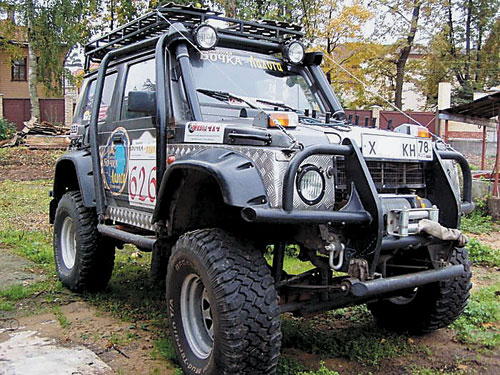
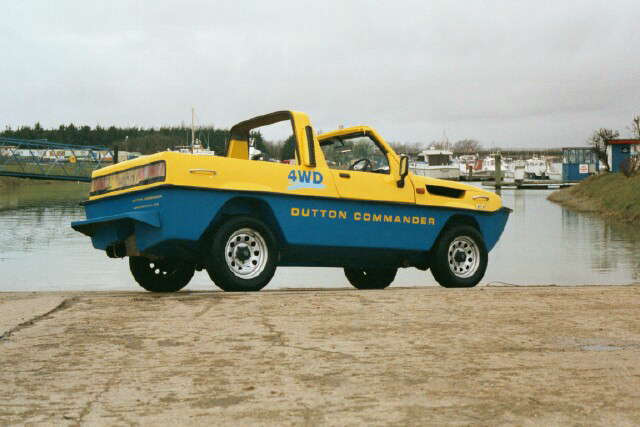
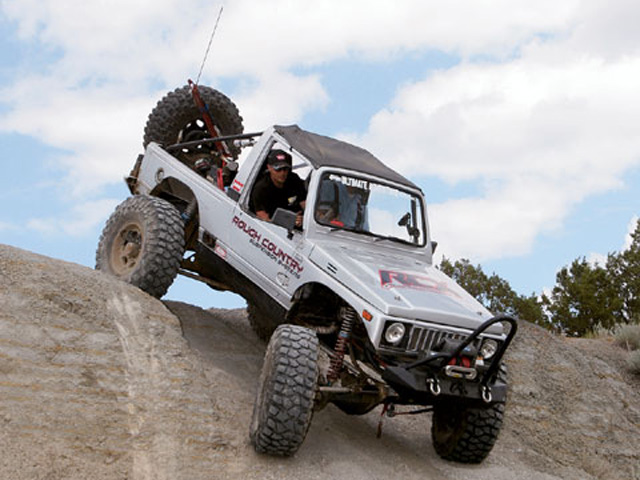
![0610_4wd_01z+suzuki_samurai+group_of_suzukis[1274].jpg](/images/gallery/favourites/0610_4wd_01z+suzuki_samurai+group_of_suzukis[1274].jpg)






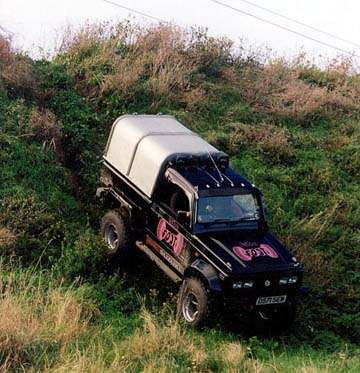
![fenderfrt6_SJ-1[376].jpg](/images/gallery/favourites/fenderfrt6_SJ-1[376].jpg)
